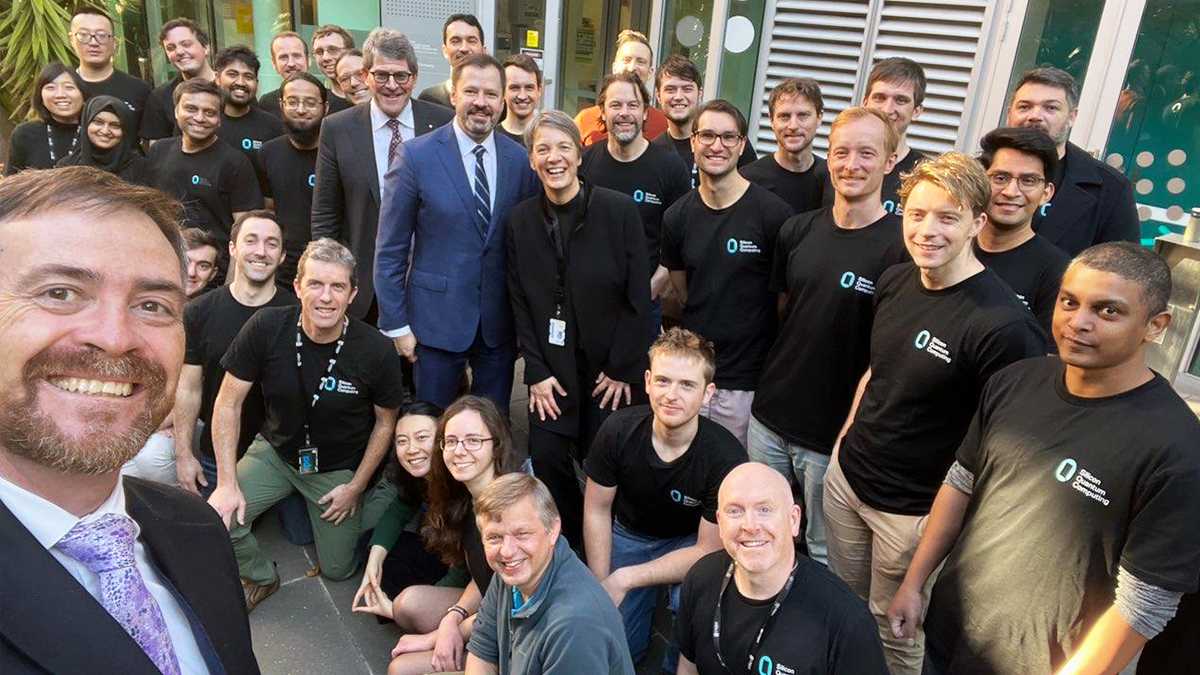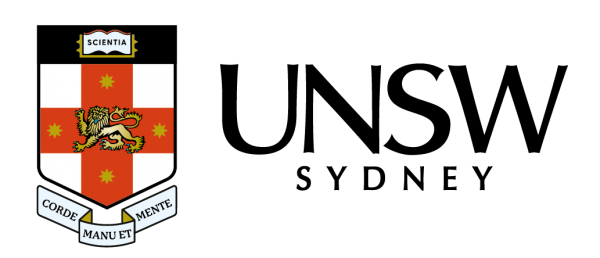
Dear colleagues
If every day is a gift, then last Thursday I was properly spoiled. To start the day, I had the privilege of welcoming almost 300 high school students to the Girls Do the Maths workshop, a program of the School of Mathematics and Statistics in UNSW Science that encourages young women to embrace maths and is tackling the underrepresentation of women in STEM. Immediately afterwards, I joined Minister for Science & Innovation, the Hon Ed Husic MP, Scientia Professor Michelle Simmons, and the SQC team for an incredible, world-changing announcement that reinforces UNSW’s position as a global quantum pioneer. Next up, I was delighted to meet and welcome a new cadre of colleagues to UNSW who are committed to our vision for positive impact, in one of our regular induction sessions for new staff. So, three jam-packed hours in the life of our wonderful University, and just one of the days that exemplifies the amazing work that actually happens every day at UNSW. Read this edition of Inside UNSW to find out more!
A literal quantum leap
When Scientia Professor Michelle Simmons AO, former Australian of the Year (2018), internationally renowned quantum computing expert, and founder and director of Silicon Quantum Computing Pty Ltd (SQC), said this technical breakthrough was the biggest result of her career, it was clear it was something extraordinary.
Michelle and a team of quantum computer physicists have created the world’s first integrated circuit at the atomic scale. This achievement occurred two years ahead of schedule, represents a major milestone in the race to build the world’s first quantum computer and, as Michelle explained, has “never been done before and nobody else in the world can do it.”
Congratulations to Michelle and the SQC team, whose stunning achievement reinforces UNSW’s position at the forefront of quantum technology globally. The findings were published in Nature on Thursday – and you can read all about it here.
Pictured above: That’s me taking a selfie with the SQC team. Standing, in the centre, are (L–R) Dr Peter Yates, Chair of the Australian Research Council Centre of Excellence for Quantum Computation and Communication Technology at UNSW; Minister for Industry & Science, the Hon Ed Husic MP; and Scientia Professor Michelle Simmons, lead researcher at SQC.
A $45m boost for Australian Centre for Advanced Photovoltaics
Following the excitement of Thursday’s announcement was a visit on Friday by the Hon. Chris Bowen MP, Minister for Climate Change and Energy, to announce funding of $45m to the Australian Centre for Advanced Photovoltaics (ACAP), which will extend operations until 2030. Under the fantastic leadership of Professor Renate Egan, ACAP, which is based at UNSW, has a number of university and research institute partners. The new funding will ensure as many as 20 research fellows and more than 65 students each year can continue their vital work on panel efficiency.
UNSW has an incredible renewable energy history with decades of research devoted to solar and hydrogen production and storage, and researchers looking at how best to connect new renewable energy to the grid. This will be of enormous importance over the next few years as we move to a low emissions economy. We can be proud of our world-leading expertise and the ongoing work of pioneers including Scientia Professor Martin Green, whom Minister Bowen described as “a national treasure” when he was on campus. This is an exciting announcement for all at ACAP and in our School of Photovoltaic and Renewable Energy Engineering (SPREE).
UNSW continues to blaze a trail, leading the nation in sustainability research and application, ever advancing our vision for positive impact.
Stop. Empower. Support.
You will have read the email that DVC Equity, Diversity & Inclusion, Professor Eileen Baldry, President of the Student Representative Council, Nayonika Bhattacharya, and I sent to all UNSW students and staff on Monday about the new Stop. Empower. Support: UNSW’s Gendered Violence Strategy and Action Plan 2022-2025.
The Strategy and Action Plan takes a whole-of-organisation approach to achieve our bold vision to Stop. Empower. Support. our community. We will:
- Stop gendered violence on our campuses through prevention and education.
- Empower our people to create a safe and respectful community by calling out inappropriate behaviour where it is safe to do so, and with the expectation that students and staff model respectful behaviour.
- Support our students and staff to raise their concerns, report incidents, and seek support when they need it.
To ensure the Strategy reflects our community’s specific needs, it was developed by the Gendered Violence Research Network (GVRN), co-designed with students and staff, and informed by the results of the 2021 NSSS and Respect@Work. I reiterate our sincere thanks to GVRN and everyone who contributed to developing the Strategy, especially those victim survivors who bravely shared their experiences and suggestions about how we can do better.
I reaffirm my commitment to acting with integrity and ensuring I model the behaviours we wish to see at UNSW and in society, and I implore every person in the UNSW community to work together to further a culture of respect and integrity at our University. We are all individually responsible for our behaviour and for making our campuses safe, welcoming places for all our students, staff and visitors.
NSW Budget 2022–2023
It was very pleasing to see research innovation, translation and impact receive worthy attention and funding in the NSW Budget 2022–2023 handed down by Treasurer the Hon. Matt Kean MP last week. Key announcements included:
- $119m over 10 years that will help accelerate the translation of local RNA research. These funds will help transform NSW into a world-leading destination for RNA research, development and local manufacturing capabilities.
- $72.2m in capital expenditure for the development of the RNA Pilot Manufacturing Facility.
- Reaffirmation of the $658m investment in the Sydney Children's Hospital and Minderoo Children's Comprehensive Cancer Centre at Randwick to help realise our ambition of one of the most significant health developments in the country.
- An investment in scientific research, innovation and technological development of $832.7m over four years.
It was pleasing to see the government make commitments to bolster affordable, accessible childcare, too.
NSW Minister for the dual portfolios of Skills and Training, and Science, Innovation and Technology, the Hon. Alister Henskens MP, has also committed $1m to UNSW for technology, innovation and entrepreneurship teaching, an allocation that recognises our leadership and expertise in these crucial areas, and the benefits we can bring to our state.
Awards, achievements and accomplishments
Today it’s my honour and privilege to congratulate:
- Associate Professor Holly Seale, whom the NSW Branch of the Public Health Association has awarded the 202 Public Health Impact Award for her outstanding contribution during the COVID-19 pandemic.
- UNSW Scientia PhD graduate Dr Maria Lastra Cagigas, who has been awarded a prestigious Schmidt Science Fellowship in the US.
- Everyone at UNSW who has contributed to our University becoming Australia’s second highest-ranking institution for contributions to scientific research in the natural sciences in the 2022 Nature Index.
And finally…
- Let’s go plastic-free in July – make the pledge and you could claim one of 2000 reusable cups and coffee vouchers.
- Let’s recharge in July too! Recharge Week is next week, Monday 4 – Friday 8 July.
- And let’s have a well-earned rest at the end of the year – UNSW will commence the year-end break from 5pm on Tuesday 20 December 2022 and will reopen on Tuesday 3 January 2023.
Best regards
Attila
Professor Attila Brungs
Vice-Chancellor and President
- Log in to post comments
